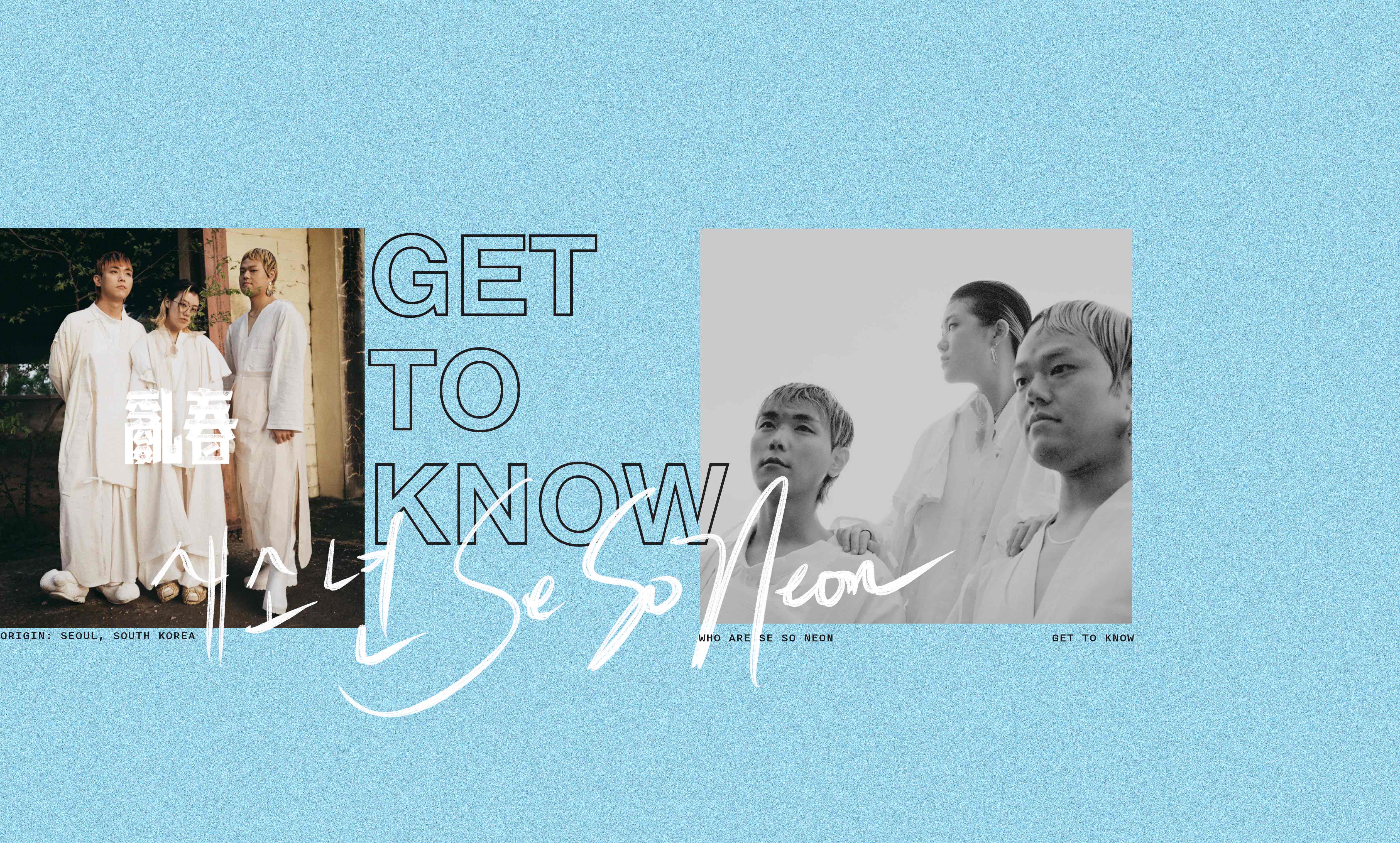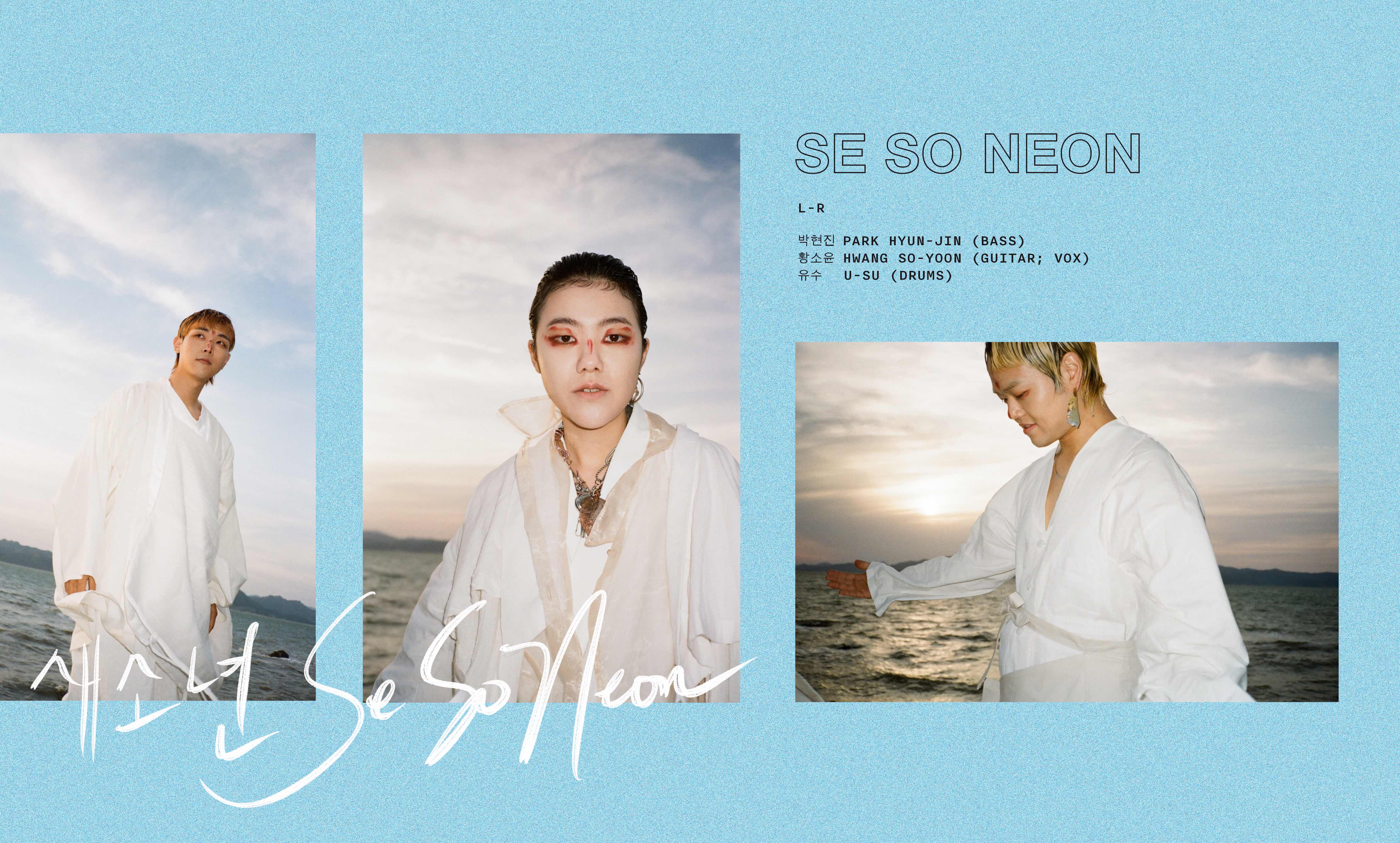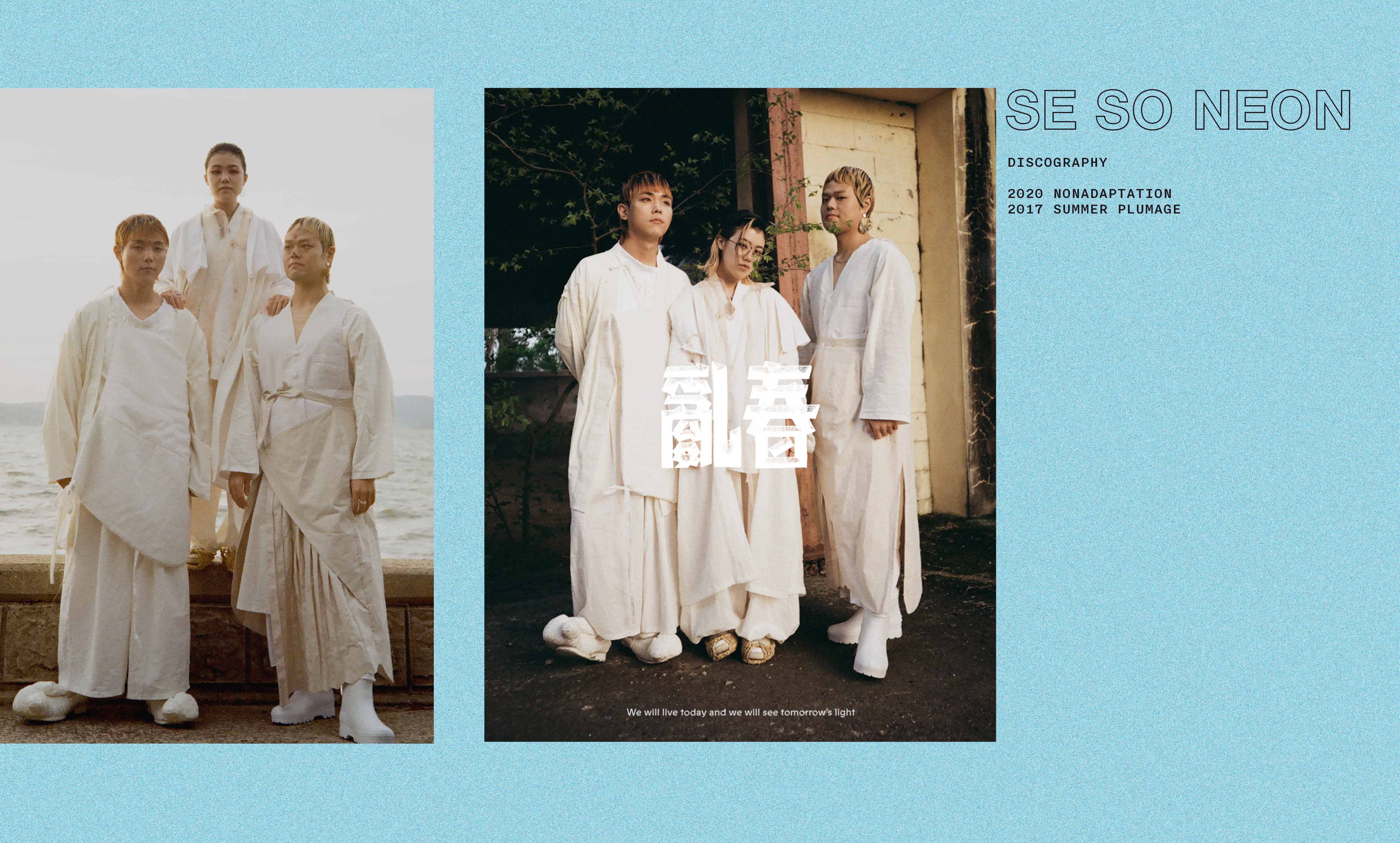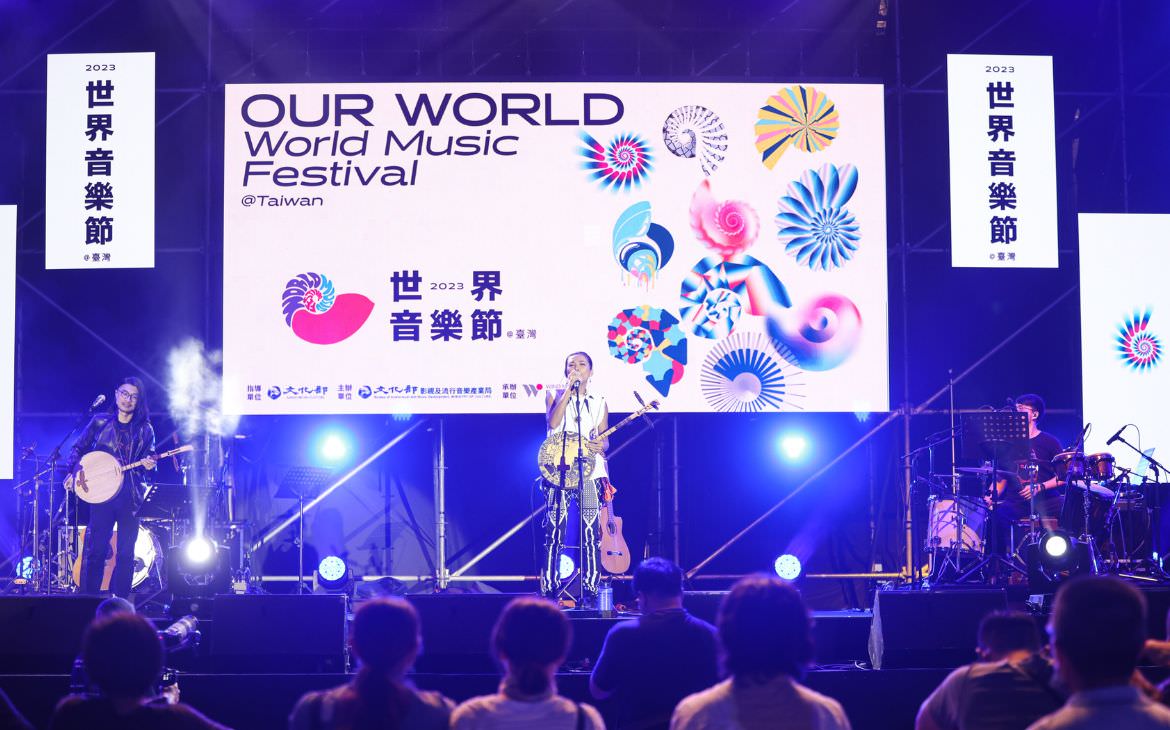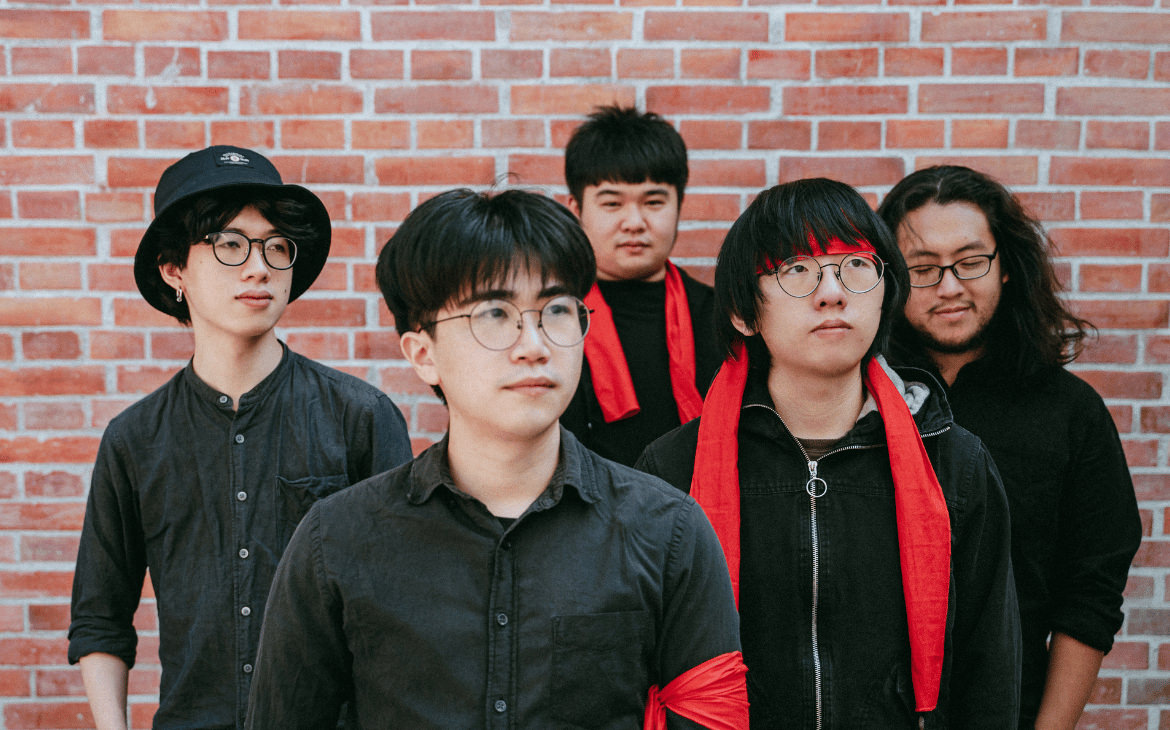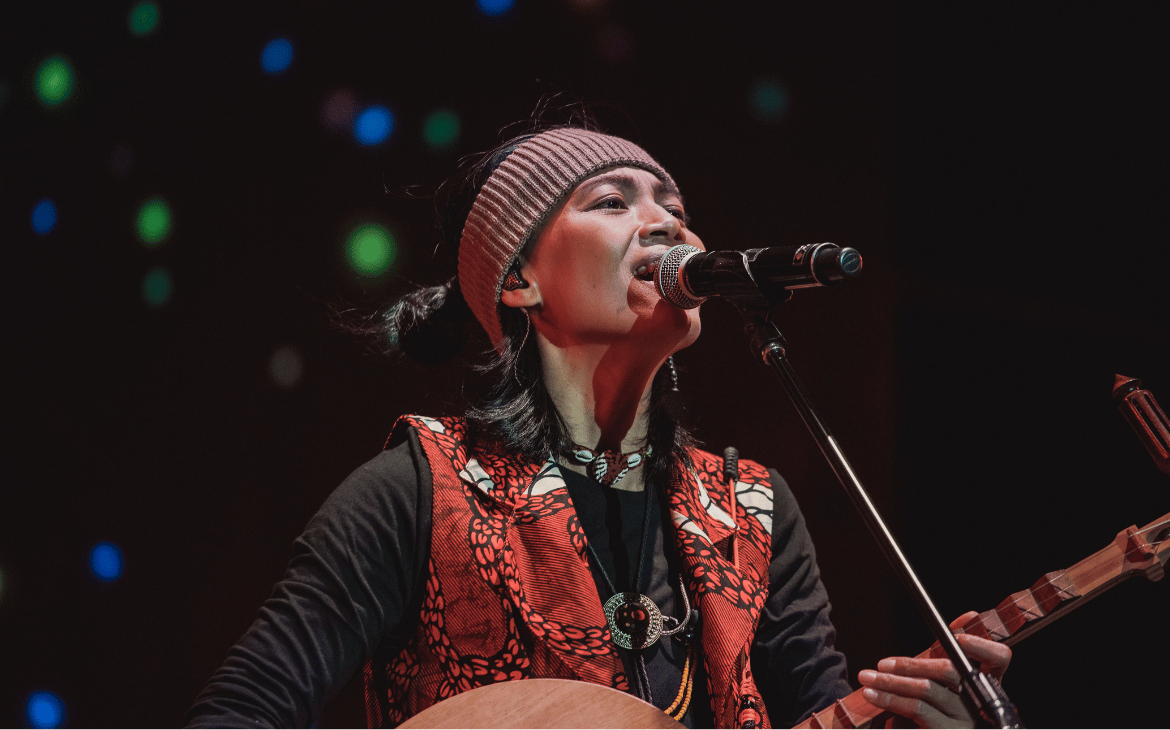Memorializing growth, according to South Korea’s Se So Neon
Words and Layout Design by MC Galang
All Artist Photos Courtesy of Magic Strawberry Sound
In her 2017 novel, The White Book (흰), Han Kang renders unnerving pain and dense grief in springtime. She writes, “Each moment is a leap forwards from the brink of an invisible cliff, where time’s keen edges are constantly renewed. We lift our foot from the solid ground of all our life lived thus far, and take that perilous step out into the empty air. Not because we can claim any particular courage, but because there is no other way.”
This sentiment is abundantly shared by Seoul-based trio 새소년 Se So Neon—comprised of Hwang So-yoon (vocals and guitar), Park Hyun-jin (bass), and U-su (drums)—whose music encompasses a broad spectrum of sonic approach: from blues, jazz, and psychedelic rock to new wave and synth-pop. Formed in 2016, the band has already toured extensively around the world and bagged multiple domestic awards, including “Rookie of the Year” from the Korean Music Awards in 2018.
While it’s almost impossible to discuss South Korea’s music industry without K-pop at the center of it, the country has long mobilized its cultural and artistic institutions to promote and/or support its artists, if not on the same scale as its most popular export. Music showcases and festivals such as Hongdae’s Zandari Festa are prime examples of a growing alternative music industry. “The South Korean independent music scene is small and solid, featuring a mix of independent artists who have been craftsman-like figures of specific niche music and musicians whose musical style would be classified as more pop,” says So-yoon in an interview with The Rest Is Noise. Awareness, however, remains a key issue. “Often, musicians are labeled as ‘independent’ depending on whether they have acquired popular or mainstream appeal, instead of focusing on whether they work independently. I considered this as a regrettable, negative context of the South Korean indie scene,” she laments.
New youth
Far from the sanitized image of pop stars, Se So Neon has no difficulty with expressing themselves freely, often bending cultural expectations, such as the reserved demeanor expected of Asian youth, of women; and especially, women in public. In “Dong,” a song off their latest EP, So-yoon celebrates the unalloyed joy of soaking oneself in a moment, of dancing and singing in public, disapproving strangers be damned.
The band adapted their name from a now-defunct youth magazine, which translates to “New Youngster” or “New Youth.” In many ways, Se So Neon has consciously shaped their personal and creative energy through exploring self-identity that largely hinges on the space and society they live in, beginning at an early age. South Korean students carry enormous pressure to be academically successful, causing alarmingly high levels of stress and anxiety; at times, fatal. Unsurprisingly, this scourge can have lifelong effects on children as they grow up. And as adults, they now have to grapple with steep living costs, financial insecurity, and rampant gentrification.
These economic woes are diluted into snapshots and repetitiveness of city life that pervade the band’s music, from the palpable malaise of Summer Plumage 여름깃 (2017) to the escapist and existential pangs of Nonadaptation 비적응 (2020). So-yoon describes their music as something marked with unique sentimentality, one that “binds all of our songs together, keeping them from dispersing without a cohesive color.” Abiding by this, So-yoon tries not to limit herself when it comes to the stories she wants to share. “I’ve never set a certain concept as the topic for Se So Neon’s music. It is a record of one’s journey of living. After all, I began making music in order to express what I’ve sensed and felt throughout my life. I try to convey my feelings from observing the world [through our music],” she elaborates.
The world, to the trio’s surprise, has taken notice. Despite having only one official single out at the time, they made their festival debut in 2016 at the inaugural edition of Incheon Pentaport Music Festival, where they’ve been part of the bill every year since. They also played sold-out shows at major venues and festivals around South Korea. Since 2018, they have mounted two successful Asian tours, including a spot at Japan’s Summer Sonic in 2019, and performed in Europe and North America. For Hyun-jin, it was a revealing moment. “I was worried that [our music] lacked awareness outside the country, but I’ve received an abundance of good energy from seeing the crowd listening and enjoying our music,” he said. For So-yoon and U-su, the biggest shock was the reception from the international audience. “I find it fascinating that the crowd can understand the energy that I’d like to share, even though we speak in different languages. At times where the exchanges between countries have been more active and unbound, there are more trajectories that our band can take to share music with a wider pool of listeners. I find this very positive,” So-yoon said. As for the latter, “I was surprised at how enthusiastic the crowd was. Their enthusiasm was different from the ones I’ve seen from the Korean crowd. They appreciated us and our music in spite of the language barrier.”
On Adaptation
Although the band has been around since 2016, they’ve already undergone drastic personnel changes. In early 2019, two of the original members, Moon Fancy and Gang To, had to leave for mandatory military service. So-yoon scouted new members through Instagram, where he found and recruited Hyun-jin and U-su. It was critical for So-yoon to maintain not only the narrative continuity but the creative energy that Se So Neon already established. Though only working and playing with each other for a year, their sense of ease with and accessibility to each other moved things where they needed it to be. “We can generate the biggest contentment one can experience while making music. We live in times where one can produce a song, add sessions, and perform live at home, but you can create an incredible energy by interacting with band members to make music and perform both on stage and off stage,” says So-yoon. To U-su, “the comfort of having people to feel kinship with is a benefit.” For Hyun-jin, nothing beats the fun of making music as a strong unit. “Any potential friction that can happen while doing something fun as a team would be a challenge. But I don’t think our band has experienced such friction so far. We’ve been very respectful of each other.” So-yoon and U-su agree that compromises are certainly the tough part of making music together. “Every member has to prioritize the emotional exchange with each other and be very considerate of what each of us are feeling,” So-yoon explains.
With a new EP to promote and a steadily growing listener base locally and abroad, Se So Neon’s year was supposed to kick off at SXSW in Austin, Texas.
And then the pandemic happened.
South Korea is one of the very few countries that was able to maintain some semblance of normalcy as the rest of the world grinds to a halt. For the band, it meant a prolonged rest period—something that they’re not used to. “We tend to gain our energy within a short period of time,” So-yoon tells us. “Since a number of plans have been cancelled due to the pandemic, we’ve lost a bit of the momentum we’ve had before. But we’re trying to stay positive and become more solid,” she adds.
For them, adjusting to the situation meant keeping themselves busy as safely as possible. This meant band rehearsals and maintaining some or creating new routines before the pandemic. “We tend to meet up consistently to jam together. We’re not currently at the stage of making something new, but we try to keep the routine intact by meeting privately and refining existing songs,” according to So-yoon. For Hyun-jin, he finds time to “learn stuff here and there. Currently, I’m learning how to play electric guitar and how to train my dog.” U-su, on the other hand, grapples with how the health crisis affects his outlook. “Recently, it’s been quiet. I wake up earlier than before and do home training regularly. Going to studios and practicing drums have prevented me from having a pessimistic stance. It’ll all work out eventually.”
The paradox of spring
Earlier this week, Se So Neon released the official version of “Nan Chun,” which is Chinese for “disorderly spring.” Although initially released two years ago on a TV show, “the song still felt relevant now, perhaps even more than it was in 2018,” So-yoon shares with us. “There was a bubbling thought that ‘disorderly spring’ will not be over within a year, which influenced the decision to re-release the track. There’s not much change in the song structure other than that we re-did the mixing and mastering. We focused on preserving the state at which the band was, in terms of the vocals and its sentiment.”
Aside of its timeliness, “Nan Chun” signifies more than seasonal change. So-yoon wrote the song in 2017 after going away on a writer’s retreat. “I finished the track while wondering what I could do if someone I love was dying silently. It wasn’t long after I witnessed the passing of someone back then,” she recalls. It was a quick process, its urgency fraught with purpose. “While spring is considered as the season of warmth and vibrancy to most people, it could feel harsher to some. This song is the message to those who will live through disorderly spring, including myself.”
Spring is often tangled with rebirth, as the winter ground thaws and we see once again the first blush of life: trees greening and dotted with new blossoms. For some, it is a reminder of the impermanence of beauty, of life. With “Nan Chun,” Se So Neon illuminates the sacredness of memory that endures, of love that survives. It is joy and warmth superimposed over sorrow; it is a promise of transformation; a memorial to loving harder, to living fuller.
Special thanks to Suh Chae Lin for the translation.
Connect with Se So Neon on Facebook, Twitter, and Instagram.

